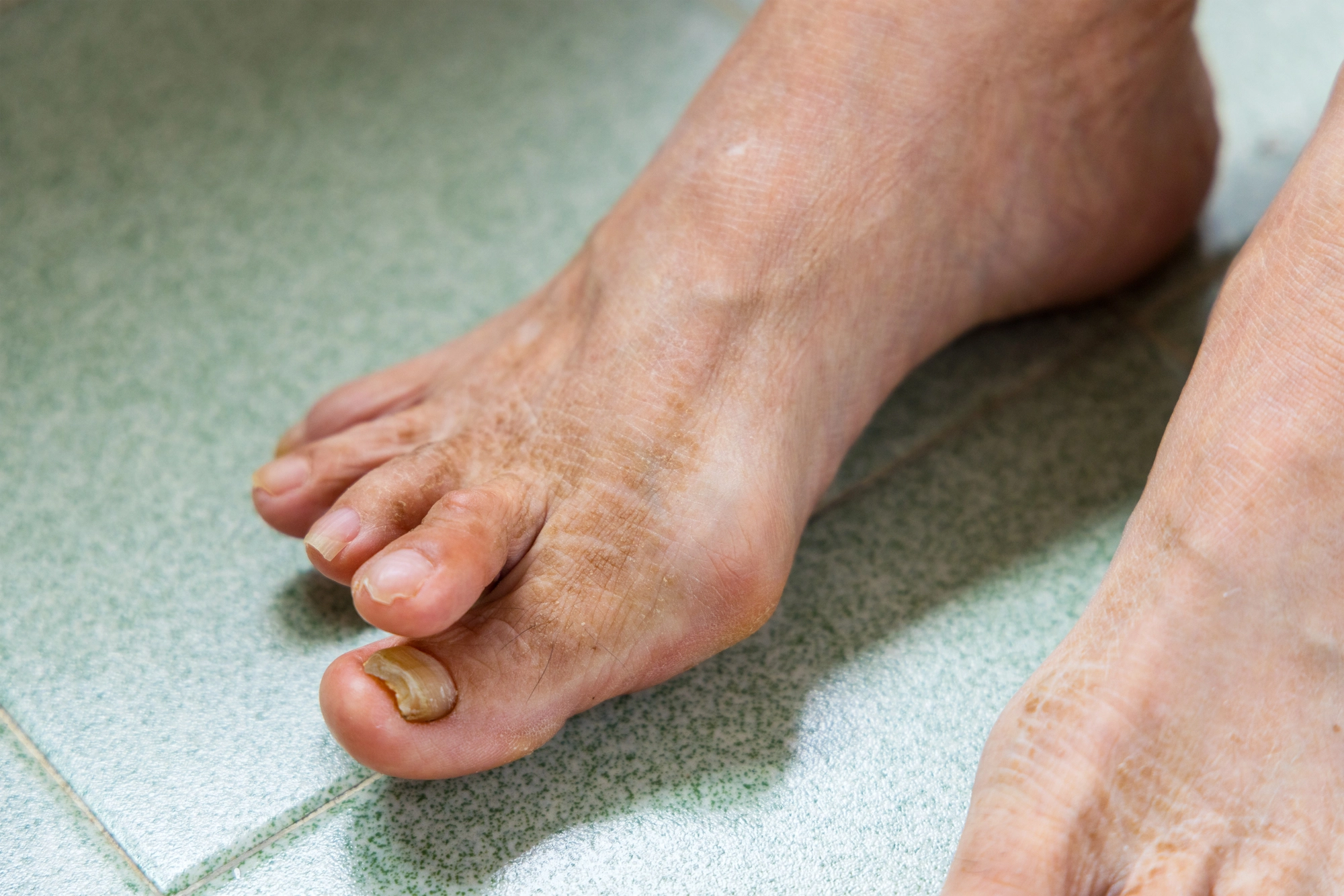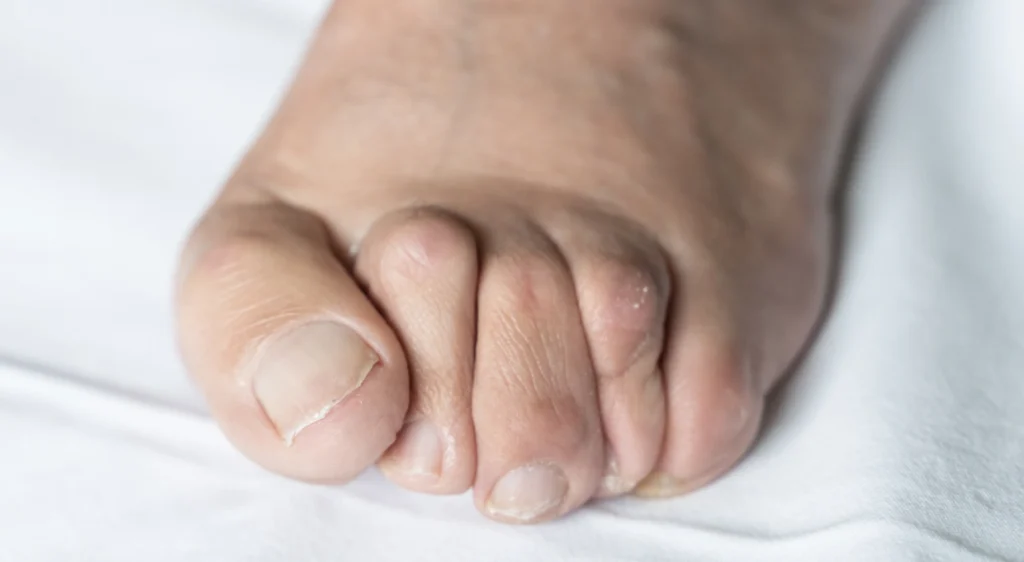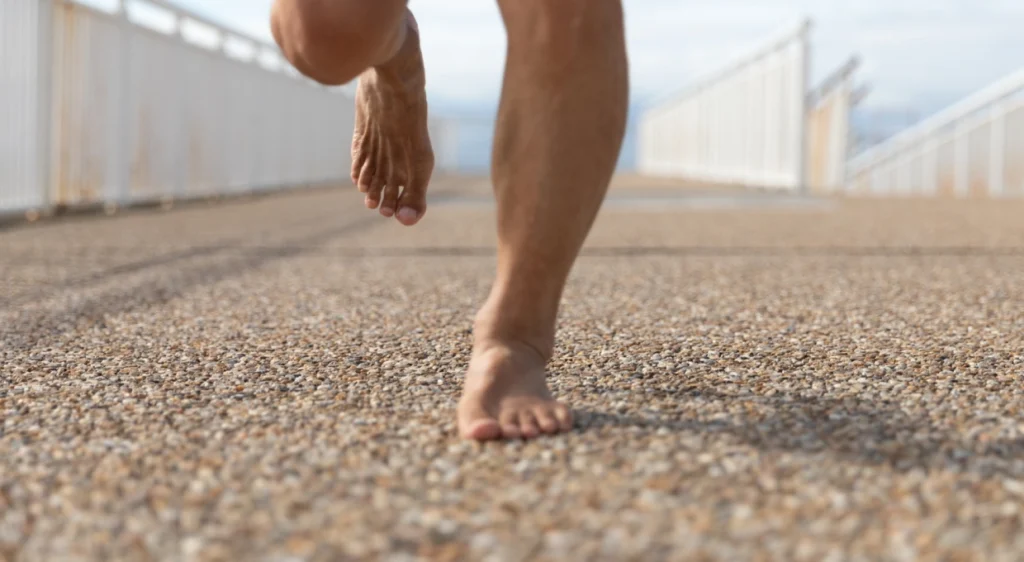Hallux valgus, commonly known as bunion, is one of the most prevalent foot deformities and usually significantly affects the quality of life of those who suffer from it. This condition is characterized by the lateral deviation of the first toe (hallux) towards the other toes, generating a bony prominence in the metatarsophalangeal joint. Clínica San Román has perfected a minimally invasive surgical technique that allows this problem to be corrected effectively, with fewer complications and an accelerated recovery. The following is a detailed explanation of what hallux valgus is, what causes it, how the surgical procedure is performed and what the post-operative recovery guidelines are.
What is hallux valgus?
Hallux valgus is a structural deformity of the foot that affects the alignment of the first toe. Over time, the pressure and friction caused by this deviation can result in a bunion, a bony prominence at the base of the big toe. This condition not only causes pain and discomfort when walking, but also makes it difficult to wear shoes and can limit mobility, significantly affecting the patient’s daily routine.
Causes of hallux valgus
The development of hallux valgus is multifactorial and can be caused by a combination of genetic and environmental elements. Among the most frequent causes are:
- Genetic factors: Hereditary predisposition is one of the main determinants, since many patients have a family history of the deformity.
- Use of inappropriate footwear: The prolonged use of narrow or high-heeled shoes forces the foot to adopt unnatural positions, favoring the development of bunions.
- Biomechanical alterations: Structural abnormalities such as flat feet or fallen arches may predispose the patient to this deformity.
- Trauma or overload: Repetitive injuries or excessive stress in the forefoot area can contribute to the aggravation of the bone structure.
- Rheumatic diseases: Conditions such as rheumatoid arthritis can trigger inflammatory and degenerative changes that aggravate hallux deviation.
The surgical procedure in hallux valgus correction
When conservative therapies – such as the use of insoles, changes in footwear or physical therapy – fail to alleviate symptoms, surgical intervention is recommended. The primary goal is to realign the first toe, eliminating the prominence and properly redistributing the load on the foot to reduce pain and improve function.
Preoperative evaluation
Before proceeding, a comprehensive study is performed, including x-rays and clinical evaluations. This analysis allows the medical team to determine the severity of the deformity and plan a customized intervention that maximizes results and minimizes risks.
The minimally invasive technique at the Clínica San Román
At Clínica San Román we highlight the use of minimally invasive surgery to treat hallux valgus. This revolutionary approach is based on making very small incisions, which reduces damage to surrounding tissues and significantly reduces postoperative pain. During the procedure, osteotomies (precise cuts in the bone) are performed to correct the position of the first metatarsal. Once realigned, screws or specific fixation devices are used to ensure the stability of the bone, allowing the correction to be maintained over time.
Advantages of the minimally invasive technique:
- Less tissue trauma: By limiting the size of the incisions, inflammation and the risk of infection are reduced.
- Accelerated recovery: The reduced surgical invasiveness promotes rapid healing, allowing the patient to resume daily activities in a reduced time.
- Improved aesthetics: Scars are minimal and virtually unnoticeable, improving patient satisfaction.
Postoperative recovery guidelines
The success of hallux valgus surgery depends not only on the procedure itself, but also on adequate postoperative recovery. To optimize the results, it is essential to follow a care protocol that includes:
Rest and wound care
During the first days after surgery, it is recommended to keep the foot in absolute rest and follow the instructions of the medical team for the care of the wound, avoiding exposure to environments that may increase the risk of infection.
Progressive mobilization
From the second or third postoperative day, gentle mobility exercises can be initiated to avoid joint stiffness. These activities should be performed under professional supervision to ensure that the stability of the correction is not compromised.
Rehabilitation and physiotherapy
Physiotherapy plays a crucial role in recovery. Through specific exercises, we work on restoring mobility and strengthening the foot musculature. This process helps to normalize gait and prevent future complications, allowing the patient to recover functionality progressively.
Use of adapted footwear
During the recovery phase, it is essential to wear special footwear that provides adequate support and minimizes pressure on the operated area. This facilitates healing and protects the correction achieved surgically.
Medical follow-up
Periodic follow-up with the medical team is vital to evaluate the patient’s evolution. These visits allow early identification and treatment of any possible complications, ensuring that the recovery process progresses optimally.
Conclusion
Hallux valgus surgery represents a definitive solution for those patients who suffer from pain and functional limitations due to this deformity. The adoption of minimally invasive techniques at Clínica San Román marks a before and after in the treatment of bunions, offering superior results with fewer complications and a notably faster recovery.
The key to success lies in a combination of an accurate diagnosis, the application of advanced technologies and a rigorous postoperative follow-up to ensure complete rehabilitation. For those who face this condition, choosing a specialized clinic guarantees not only the correction of the problem, but also a comprehensive improvement in quality of life, allowing them to resume daily activities with greater comfort and confidence.
In short, minimally invasive surgery for hallux valgus is consolidated as a cutting-edge option, aligned with the latest innovations in orthopedic surgery. With a personalized approach and a commitment to the patient’s well-being, Clínica San Román is positioned as a leader in the treatment of this pathology, offering its patients the possibility of walking again without pain and with total freedom.



